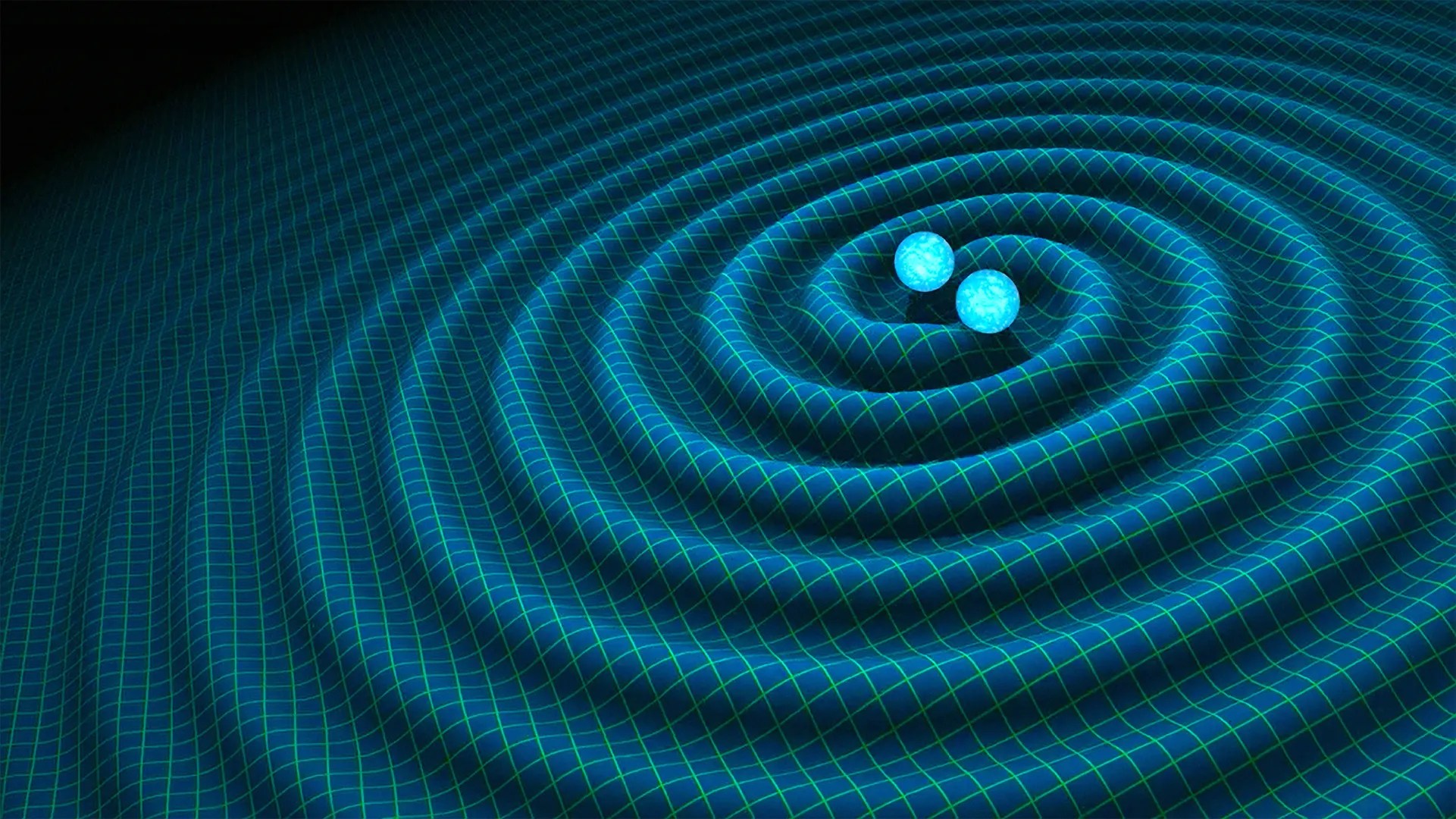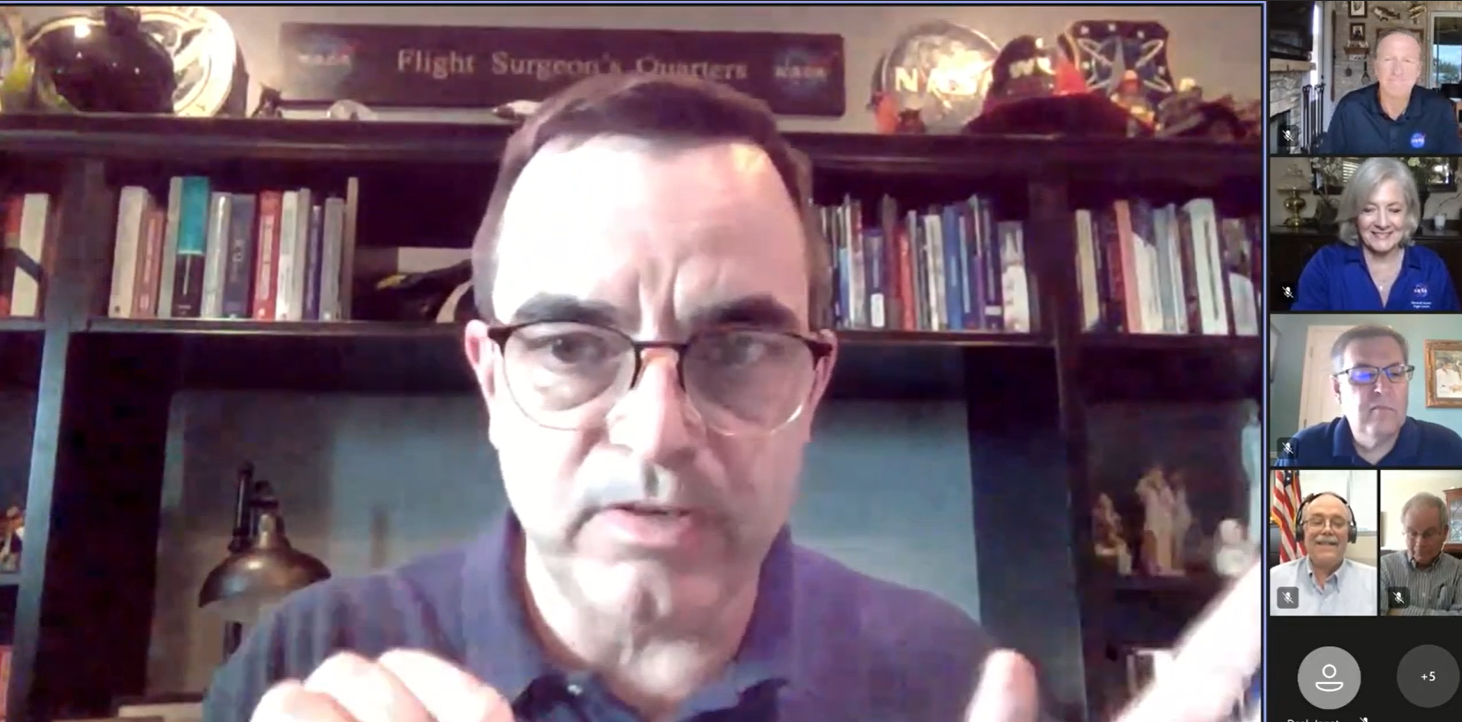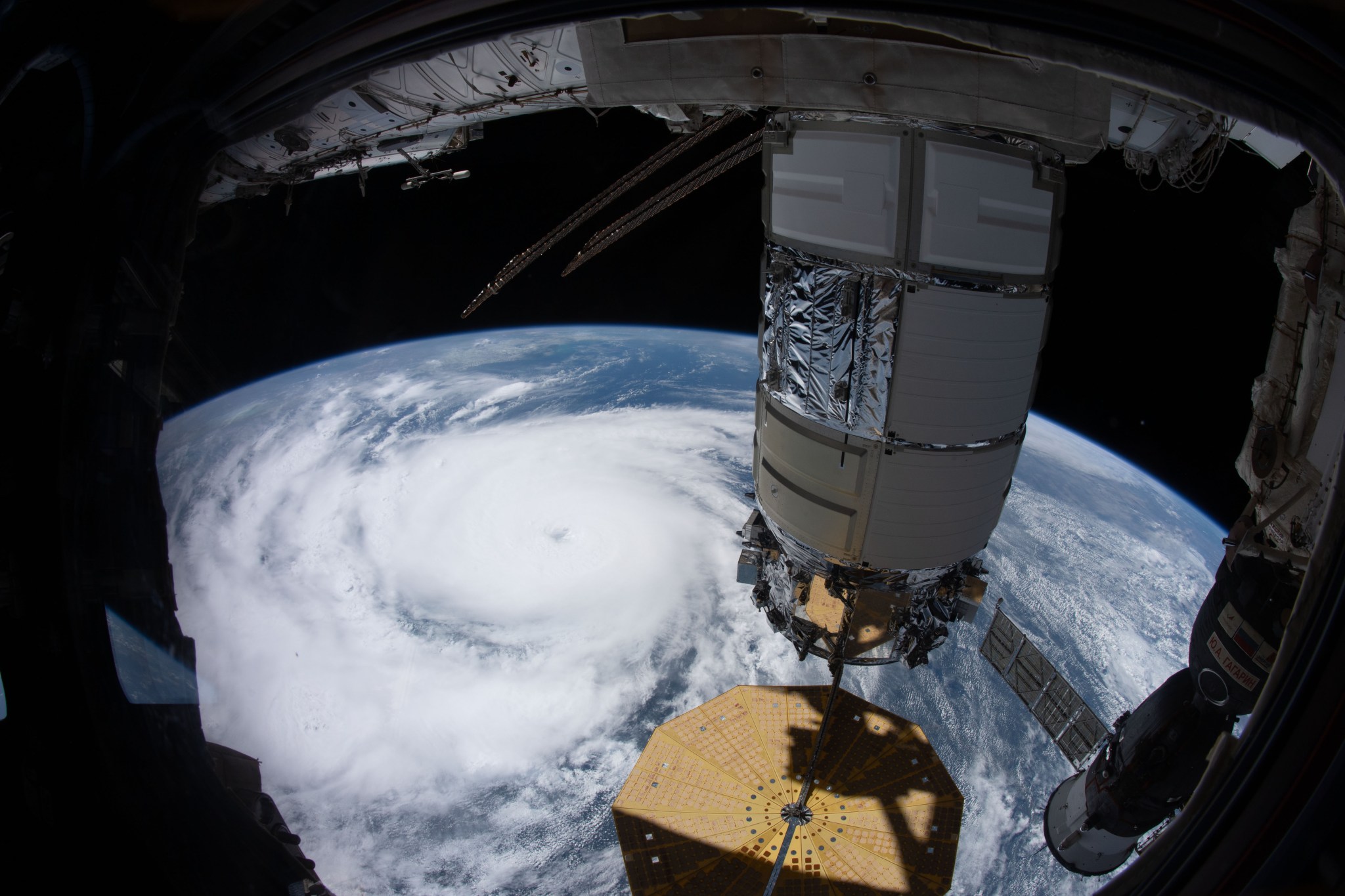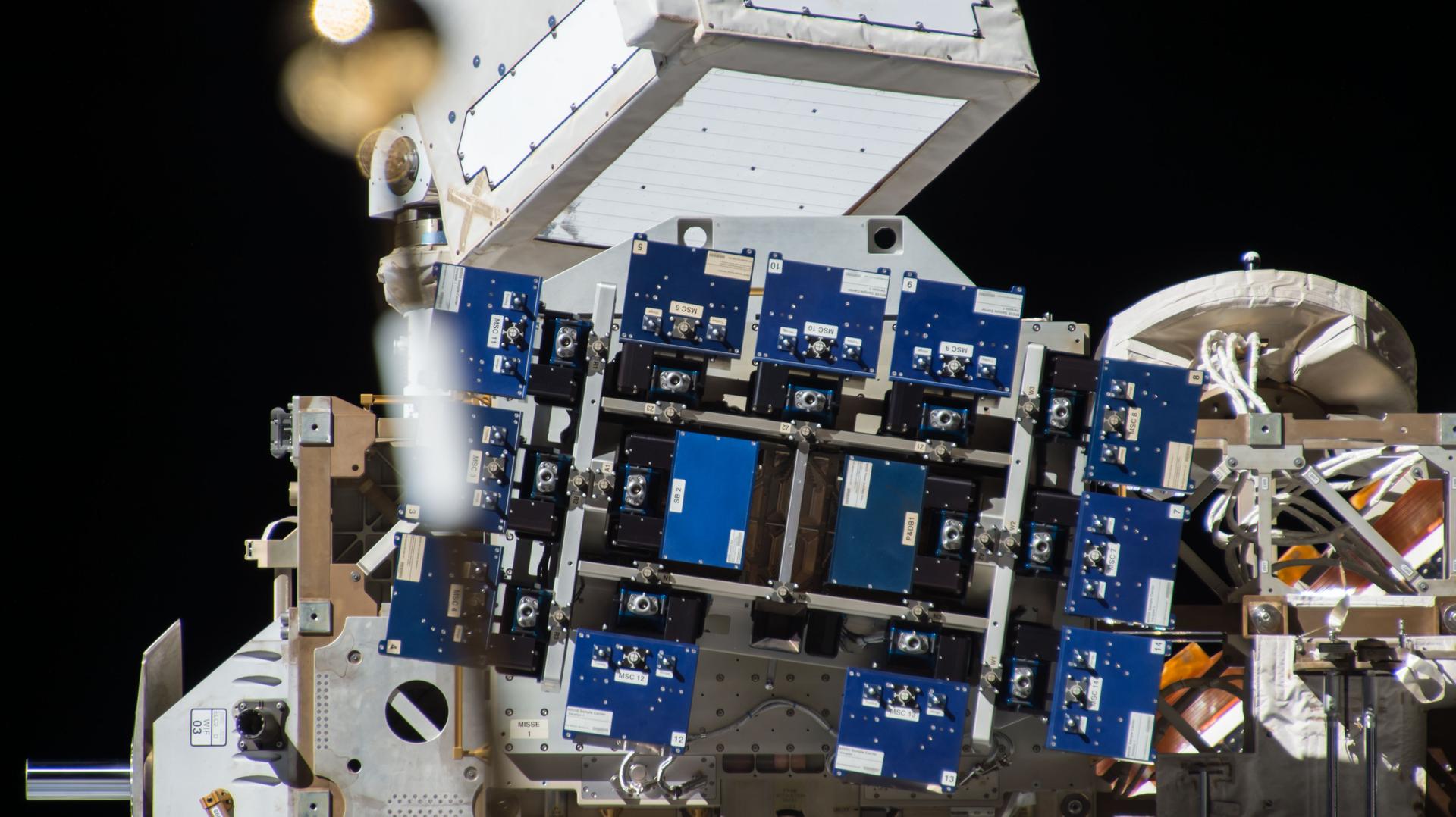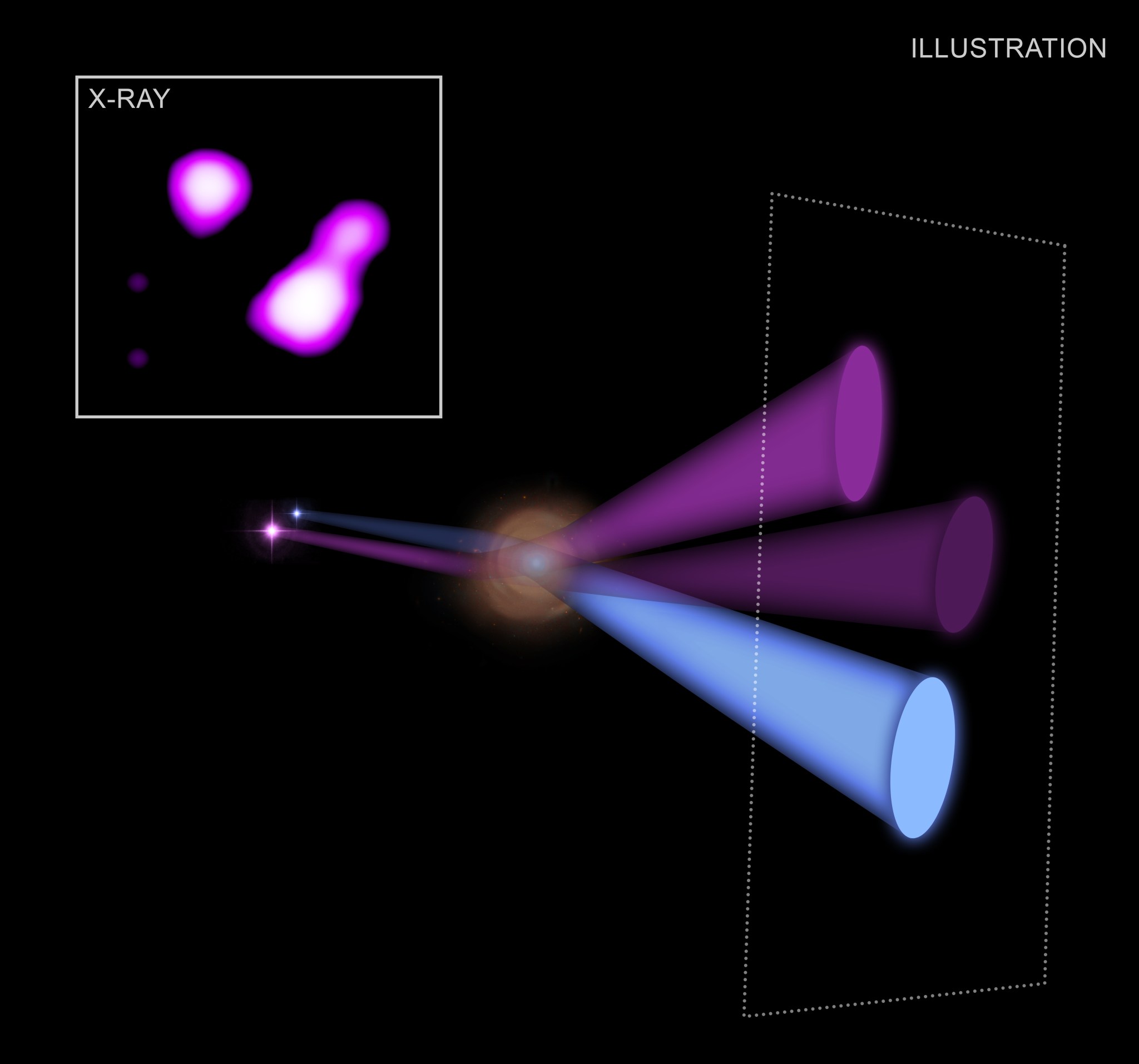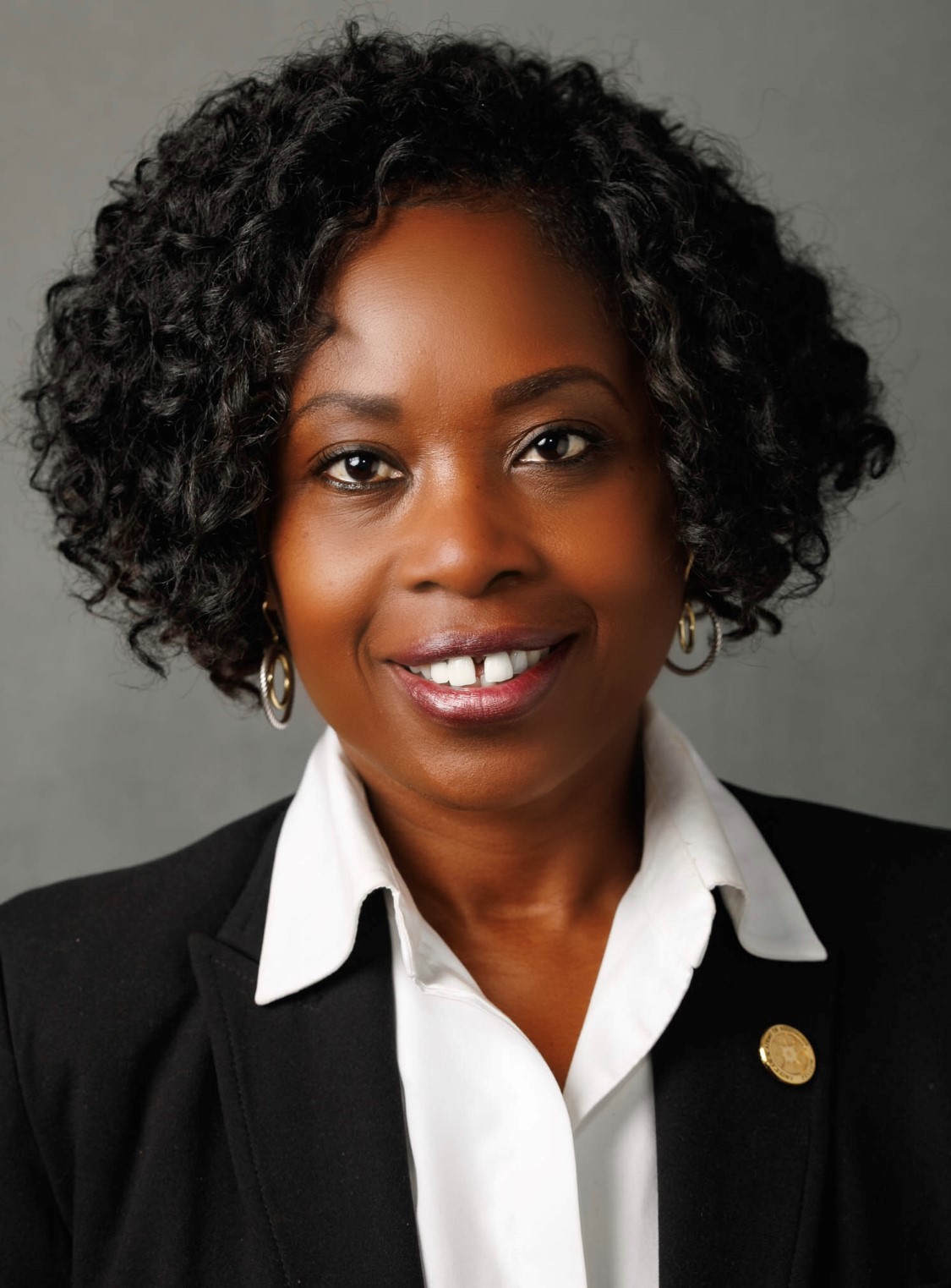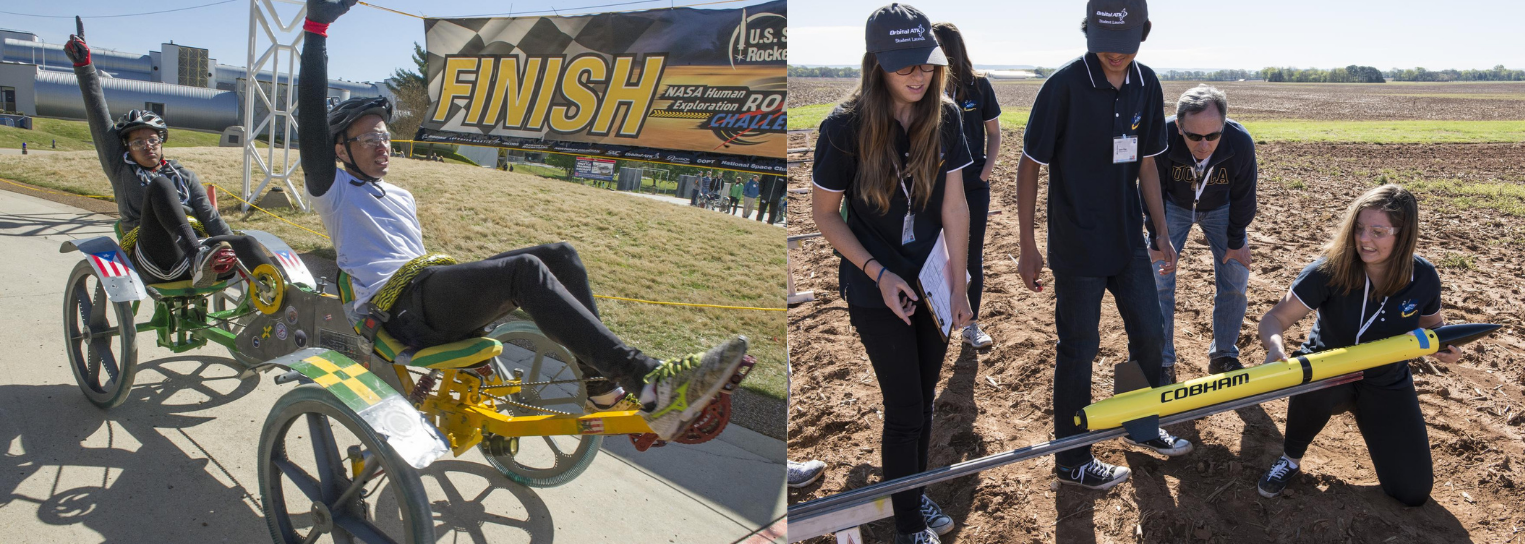Marshall Leadership Talks COVID-19 Protocols in Virtual Town Hall
By Rick Smith
As the nation continues to weather the COVID-19 pandemic, leaders at NASA’s Marshall Space Flight Center convened Sept. 1 to offer insight and encouragement, and to answer team members’ questions.
Marshall Director Jody Singer addressed the subject of returning to work and the implementation of new COVID-19 safety protocols. Those new procedures and other questions about the pandemic, she said, accounted for roughly 90% of the questions posed by team members prior to the town hall.
“I realize a lot of us are dealing with fear and uncertainty surrounding many of these issues, and many of you face a lot of challenges as you work from home,” she said. “We’re trying to do everything in our power to make that as easy as possible on you.”
Marshall Associate Director Steve Miley, joining Singer virtually, noted that the town hall held in June marked preparations to move Marshall to Stage 2 of NASA’s pandemic protocols.
“Unfortunately, a lot has changed since then in terms of the increased spread of COVID-19,” he said. “We’re continuing to see a rise in cases and hospitalizations across the country and here in our own [Huntsville] community as well as in New Orleans.”
Dr. J.D. Polk, NASA’s chief medical officer, did not mince words about the dangers of new COVID-19 variants and the importance of vaccinations to limit the severity and spread of the rapidly mutating virus.
“Right now, 98% of the people in the hospital are unvaccinated, and over 98% now in intensive care units are unvaccinated,” he said. “The folks dying from this virus are the unvaccinated.” The bottom line, per his observations? “The vaccine is saving lives, sparing people hospital admission and ICU admission,” he said.
Miley noted that recent guidance from Marshall’s Safer Federal Work taskforce set out safety protocols for physically returning vaccinated and unvaccinated team members alike back to work – including plans to conduct weekly wellness tests on those team members still unvaccinated against the COVID-19 virus. That testing is expected to begin later this month.
Visitors to the center also will be required to attest to their vaccination status or arrive with proof of a negative COVID-19 test prior to a visit to Marshall or Michoud Assembly Facility.
To date, 96% of Marshall and Michoud team members have completed the required vaccination attestation form, with 78% of Marshall personnel reporting they’ve been fully vaccinated and 72% of Michoud personnel reporting the same.
Singer emphasized that failure to comply with required testing for unvaccinated workers – just like masking and distancing protocols – could result in disciplinary action once NASA has established its procedures for administering those tests.
“We’re counting on our Marshall team to follow the rules,” she said. “We’re counting on you to do the right thing.”
Marshall remains at 25% capacity under Stage 2 safety protocols. That will not change without 30 days’ notice to all employees first, and at that point the center may be cleared to return to 50% capacity. Even so, Singer said, Marshall will ensure such an increase is done safely, adhering to federal guidelines and continuing to consult with state and local health officials about the ongoing pandemic – and Miley noted that NASA continues to refine its workflow to enable at-risk team members to work remotely and via telework indefinitely while the crisis continues.
“If you ever feel something isn’t safe, talk to your supervisor immediately,” Miley said.
Team members who missed the town hall can find it on the Inside Marshall landing page.
Ultimately, Singer said, the work continues and the outlook for the center is positive. “We’re still making significant progress,” she said. “You’re writing history.”
Smith, a Manufacturing Technical Solutions employee, supports Marshall’s Office of Strategic Analysis & Communications.
Hurricane Ida Recovery Efforts Continue at Michoud
NASA’s Michoud Assembly Facility reopened Sept. 7 for access to tenants and team members who must be on-site to complete recovery operations, assess work areas, and make preparations to resume normal operations following Hurricane Ida’s landfall in Louisiana on Aug. 29.
This past weekend, the city of New Orleans and Entergy restored power and water service to Michoud, and its joint NASA, tenant, and contractor teams worked diligently to safely and methodically reestablish commercial utility services to buildings across the site.
The Michoud Safety and Security team completed an initial assessment of the 829-acre facility and its 81 buildings and structures Aug. 31. Teams determined Michoud did not sustain any significant structural damage. Wind from Ida, a Category 4 storm, also caused damage to several buildings as well as to the roof deck panels and lightning protection systems. Many of the roofing systems at the facility did sustain significant damage that caused water intrusion into some buildings. As of Sept. 6, roofing teams had made more than 700 point repairs across the site and efforts are continuing to repair others.
“Teams are working diligently and methodically on recovery efforts at NASA’s Michoud Assembly Facility, and our NASA and contract teams are committed to ensuring the facility is ready for nonessential teams to return,” Michoud Director Lonnie Dutreix said. “We are very thankful that no injuries were reported to the NASA ride-out crew as they weathered the storm and kept Michoud secure.”
Michoud is the primary manufacturing site for spaceflight hardware for NASA’s Artemis lunar missions, including major parts of the agency’s Space Launch System rocket and the Orion capsule structure. Teams are manufacturing hardware for missions beyond Artemis I inside the factory. Inspections of flight hardware and tooling inside the factory are ongoing and are not complete due to widespread power outages in the region.
Although no personal injuries were reported by NASA and government contract employees, many Michoud team members have been displaced from their homes, remain without power, have experienced damage or loss of personal property, and have not been able to return to work. Some Michoud employees were already teleworking off-site due to COVID-19 restrictions.
For the latest statements, status reports, and imagery, visit here.
Marshall Contributes to Key Space Station Experiment
The first external science payload berthed on the International Space Station in 2001, the successful Materials International Space Station Experiment, or MISSE, enables NASA and its partners to evaluate the performance, stability, and long-term survivability of materials and components identified for various space-based applications and commercial uses.
Over the past 20 years of continuous-crewed science on the space station, NASA has flown 15 MISSE missions, testing more than 4,000 materials samples and specimens, from lubricants, paints, and coatings to fabrics, container seals, fasteners, and solar cell technologies. Data from these missions have helped numerous NASA, Department of Defense, and commercial spacecraft.
“MISSE-15 includes tests of concrete, spacecraft materials, fiberglass composites, thin-film solar cells, radiation protection materials, a micro-optical chip, 3D-printed polymers, and more,” MISSE project engineer Ian Karcher said. “In addition, the availability of this platform for commercial technology development contributes to the ongoing commercialization of space and development of new space technologies.”
Launched Aug. 28 on SpaceX 23, MISSE-15 includes seven NASA materials science experiments. Among them are Materials Experiment for Long Duration Exploration-2, led by principle investigator Miria Finckenor of NASA’s Marshall Space Flight Center. The experiment continues research initiated in MISSE-11, testing the durability of 35 candidate materials – from spacesuit fabrics and fasteners to various 3D-printed materials, plus a variety of dust-repelling polymer films and coatings – in the deep cold and airless space environment.
Test data will give NASA and its partners new insight into advanced techniques for repelling and electrostatically dissipating lunar dust – historically a critical issue for battery and hardware life, solar power arrays, and astronaut health on the Moon’s surface. Data from the experiment could also aid development of materials for use in Artemis-era spacesuits, new exploration spacecraft, Earth observation satellites, and next-generation telescopes.
Marshall scientists are co-developers on two additional MISSE payloads: the Advanced Thermal Protection Coatings Experiment, and Testing of Impact-Resistant, Damage-Tolerant Composites with Shear-Thickening Fluid Energy Absorbing Layers.
‘X-ray Magnifying Glass’ Enhances View of Distant Black Holes
A new technique using NASA’s Chandra X-ray Observatory has allowed astronomers to obtain an unprecedented look at a black hole system in the early universe. This is providing a way for astronomers to look at faint and distant X-ray objects in more detail than had previously been possible.
Astronomers used an alignment in space that shows “gravitational lensing” of light from two objects that are nearly 12 billion light-years away.
The objects in this latest Chandra study are part of a system called MG B2016+112. The X-rays detected by Chandra were emitted by this system when the universe was only 2 billion years old, compared to its current age of nearly 14 billion years.
Previous studies of radio emission from MG B2016+112 suggested that the system consisted of two separate supermassive black holes, each of which may also be producing a jet. Using a gravitational lensing model based on the radio data, Dan Schwartz of the Harvard-Smithsonian Center for Astrophysics and his colleagues concluded that the three X-ray sources they detected from the MG B2016+112 system must have resulted from the lensing of two distinct objects.
These two X-ray-emitting objects are likely a pair of growing supermassive black holes or a growing supermassive black hole and a jet. Previous Chandra measurements of pairs or trios of growing supermassive black holes have generally involved objects much closer to Earth, or with much larger separations between the objects.
A paper describing these results appears in The Astrophysical Journal and a pre-publication version is available here. The authors of the study are Schwartz, Cristiana Spignola (National Institute for Astrophysics), and Anna Barnacka (Harvard-Smithsonian Center for Astrophysics).
NASA’s Marshall Space Flight Center manages the Chandra program. The Smithsonian Astrophysical Observatory’s Chandra X-ray Center controls science from Cambridge, Massachusetts, and flight operations from Burlington, Massachusetts.
Read more from NASA’s Chandra X-ray Observatory here. For more Chandra images, multimedia, and related materials, visit here.
Virtual Safety Set for Sept. 15
By Adam Farragut
NASA’s Marshall Space Flight Center will hold virtual activities for its annual Safety Day on Sept. 15 from 9:30 a.m. to 4 p.m. This year’s theme is “Refocus: Zoom in Safely.”
“Last year we transitioned from a live event, but we had no idea this year’s event would also need to be virtual. Luckily, we learned to be flexible and adaptable while ensuring a memorable Safety Day,” said Beverly Peterson, an occupational health and safety specialist at Marshall and chair of this year’s Safety Day committee.
This year’s Webex activities will focus on situational awareness and employee well-being. Marshall Deputy Director Rick Burt will kick off the day’s events. Julie Bilbrey, deputy director of Marshall’s Safety and Mission Assurance Directorate, and Bill Marks, deputy director of Marshall’s Office of Center Operations, will then discuss returning to work safely.
Dr. Belinda Savage-Edwards, a board-certified neurologist, will deliver the keynote address “Healthy Habits for Sweet D.R.E.A.M.S.” beginning at 12:30 p.m.
Savage-Edwards received her doctorate in medicine from the University of Pittsburgh and holds board certifications from the American Board of Psychiatry & Neurology, as well as the American Board of Electrodiagnostic Medicine. She uses her neurology practice to teach the importance of a healthy lifestyle in preventing conditions such as migraines, strokes, memory disorders, and certain autoimmune diseases. Additionally, she was selected as an Alabama delegate to represent the American Academy of Neurology in Washington to advocate on behalf of all neurology patients.
Other Safety Day events include a Mission Success is in Our Hands panel with Jeff Haars, vice president and program manager of Jacobs Space Exploration Group, at 10:40 a.m.; organizational activities at 11:10 a.m. and 2 p.m.; and awards from the Safety Day 2021 committee at 1:45 p.m.
“Safety Day is an annual agency event that originated after the Columbia accident when the agency looked for better ways to raise safety awareness. I hope the event gives the Marshall team an appreciation for their safety while reflecting on the sacrifices others have made to make NASA a great place to work,” Peterson said. “The Office of Safety and Mission Assurance is not only a regulatory office, but one of service. Our goal is to ensure mission success.”
Visit the Marshall Safety Day page on Inside Marshall for a full schedule of events, Webex login credentials, and more information.
A series of Safety Day lunch and learn videos can be viewed here. The topics are Relax (by Dr. Terry Sterry, Employee Assistance Program coordinator), Reconnect (by Lakeisha Hawkins, deputy manager of the Human Landing System Program Office), Recharge (by Dr. Joseph Musick, Marshall Medical Director), and Reward (by Bill Hill, director of Marshall’s Safety and Mission Assurance Directorate).
Farragut, a Manufacturing Technical Solutions employee, supports Marshall’s Office of Strategic Analysis & Communications.
NASA Invites Students, Educators to Join Artemis I Mission
As students and educators return to classrooms online and in-person, NASA welcomes the next generation of explorers – the Artemis Generation – to learn more about the mission that will pave the way to land the first woman and first person of color on the Moon.
NASA’s Artemis program will reach new heights this school year with the uncrewed Artemis I mission, the first integrated launch of the agency’s Space Launch System megarocket that will send the Orion spacecraft around the Moon and back to Earth ahead of future flights with astronauts.
Educators can bring the excitement of Artemis into the classroom using NASA’s standards-aligned educator guides. The Landing Humans on the Moon Educator Guide offers four activities to help middle school students learn about the Moon and create a model of a human landing system for the lunar surface.
Other educator guides focus on key concepts of the Artemis missions, such as crew transportation with Orion, propulsion with SLS, and habitation with Gateway, an outpost orbiting the Moon. Three new Artemis-focused educator guides – Hazards to Deep Space Astronauts, Deep Space Communications, and the Artemis Camp Guide – will be published this fall.
NASA will offer a weekly issue of resources to engage students for four weeks beginning before Artemis I launch through splashdown with the Artemis I Learning Pathway. Educators and families can register Oct. 26 for the best science, technology, engineering, and mathematics content on Artemis I to arrive straight to their inboxes.
High school and college students should check out NASA’s Artemis Student Challenges, engineering, and technological design challenges focusing on topics and technologies involved in human spaceflight:
- First Nations Launch competition offers tribal colleges and universities, in addition to American Indian Science and Engineering Society chapter students, the opportunity to demonstrate engineering and design skills through direct application in high-powered rocketry.
- Lunabotics is an annual engineering challenge that is in the process of updating to a lunar construction competition. The focus will remain on training university students in systems engineering methods as they design, build, program, and operate lunar technologies. The challenge for 2022 is under development; the 2022 Lunabotics Rules and Rubrics will be released Sept. 8.
- NASA’s Minority University Research and Education Project Innovative New Designs for Space is a multisemester, undergraduate-level activity in which students’ skills, creativity, and innovation are challenged as they design and build technologies needed for NASA’s Artemis mission. All minority-serving institutions are eligible to have a faculty-led student team. Applications opens Sept. 8.
- Human Exploration Rover Challenge encourages high school and college teams to design, build, and test human-powered rovers capable of traversing challenging terrain and tools for the completion of various mission tasks. The 2022 Handbook is available now; U.S. registration opens and international team proposals are due Sept. 9.
- Student Launch challenges teams of students at the middle school, high school, and college levels to design and build high-powered rockets containing a scientific or engineering payload. Interested teams can view the 2021-2022 handbook and request for proposals, which are due Sept 20.
- Breakthrough, Innovative and Game-changing Idea Challenge provides undergraduate and graduate students the opportunity to design a wide range of alternative rover locomotion modalities to either enhance or replace traditional wheeled mobility systems that can expand access to extreme terrain on the Moon and, later, on Mars. Full competition details are available now. Notices of intent are due Sept. 24, and proposals are due Jan. 18, 2022.
- Spacesuit User Interface Technologies for Students is a design challenge that engages undergraduate and graduate student teams to design and create spacesuit information displays with augmented reality environments – technologies that could be used on future spacewalks on the Moon and Mars. The request for proposals opened Aug. 30; letters of intent are due Sept. 30.
- Micro-g Neutral Buoyancy Experiment Design Teams challenges undergraduate student teams to design, build, and test a tool or device that addresses an authentic, current space exploration challenge. Testing is conducted in simulated microgravity at the Neutral Buoyancy Laboratory at NASA’s Johnson Space Center. The 2022 challenge is now open with letters of intent due Oct. 12 and proposals due Oct. 28.
NASA’s Teams Engaging Affiliated Museums and Informal Institutions program is supporting several informal education organizations with Artemis lunar exploration content to promote STEM learning and help inspire the next generation of explorers, including populations that are historically underrepresented in STEM professions.
NASA is also teaming up with other organizations and companies to collaborate on educational resources ahead of the Artemis I launch. Collaborations include Girl Scouts of America, LEGO Education, Noggin, Discovery Education, Frito-Lay, Tynker, Microsoft, Peanuts Worldwide, and more.















